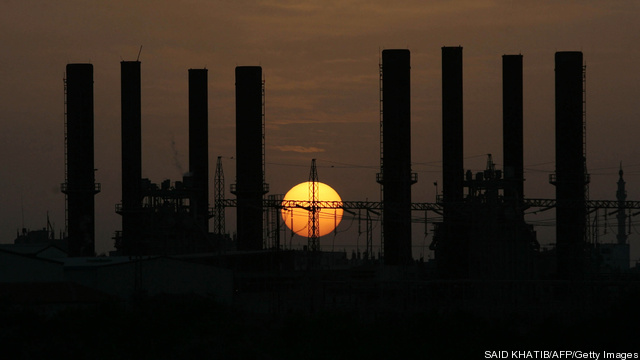
The past year has proved a fundamental pivot in North American energy markets, and set the stage for the coming years to look very different from the past four decades of US energy industry history.
I’ve reviewed the ways the changes that originated in 2012 will affect the political scene in the US here, but in looking through our most popular and most compelling posts on Breaking Energy in the last year I noted how many of them supercede easy categorization. Stories about fracking cut across the buckets in which we seek to put our daily dose of energy news, analysis and discussion, but so have stories about the wind industry, financial shifts and smart grid technology.
The utility industry has added a significant amount of new power capacity in the past decade, even as a struggling economy has weighed on power prices. But the sector still faces a potential huge shortfall in capacity as its ability to extend the life of power plants beyond their forecast retirement dates slips.
Predictions that the sector would have to seek record amounts of capital and that the effort would drive and reflect changes in regulatory approaches to the energy business have proliferated since the late 90s, and entire careers have been spent waiting for a boom that hasn’t yet arrived.
The blackout that stemmed from hurricane Sandy and swiftly rising prices in California have focused minds on a regional level, but most of the action nationally for the power sector has remained stuck in a rising hysteria about diminished reliability and huge potential investment costs.
Energy supply doesn’t do much good if it stays in one place, and the heart of any commodity market lies in its mechanisms of storage and transportation. As the energy market itself changes these are two of the areas of keenest innovation today, with energy storage technology poised to make a long-held dream of renewable and distributed power with mass appeal a reality and shifts to transmission planning both opening new business models to profitability and threatening old monopolies.
The actual building of wires hasn’t been active in 2012 in the same way other forms of energy transport has been – everything from rails out of the Dakotas to ramped-up pipeline capacity is moving energy in new ways that will impact how and where the US economy grows.
In an ordinary election year, if there is such a thing, the process of regulatory changes would take a natural back seat to the heat and light of political debate. That was the case for emissions regulations progress in the US in 2012, with the most-disputed parts of several EPA rules being pushed beyond the November election date, but surprisingly several long-awaited regulatory changes came into effect this year.
While most Americans know little about it, the Federal Energy Regulatory Commission’s Order 1000 has the potential to transform their experience of energy. While the finer details of the order are still being worked out in real-world applications, the next generation of energy production will have to prove itself along a different set of regulatory priorities than the last great buildout of American power plants.
Understanding it has a big job to explain the finer points of power regulation to consumers, FERC issued a simple explanation of the order that can be found here, and Breaking Energy wrote about it here.
One of our busiest content categories for the year was in dealmaking, where the energy sector defied a broader hesitancy for new investment and M&A activity in mature industrial sectors.
Interest from international investors in both the incredible technology leaps in the US oil and gas business and in the new asset opportunities that technology shift has enabled drove high-profile investments in 2012, even if many of the actual dollars landed north of the border in Canada, where Breaking Energy visited to profile a booming industry at work.
The fallout from collapsing prices in the renewable energy sector also drove a painful but productive consolidation in that space, and banks, advisors and lawyers were kept busy as new models emerged and long-term corporate players picked up where banks feared to tread.
Sometimes the technologies that most transform are lives are hard to see at first. The military requirements that sparked the innovation of the internet are barely relevant to its existence today, and it remains hard to reliably forecast – not that people aren’t trying – how a pace change acceleration in energy technology development over the past decade will develop (in many cases leveraging the internet itself).
The “smart grid” was the big industry story of 2011 but retreated in 2012 as failures of implementation came to light and confusion about exactly what to do with all that data. Industry experts say 2013 is the year to watch for the resurgence of the smart grid, read recent contributions from sector leaders here and here.
What were the big stories in energy for you in 2012? What are the big stories still to come in 2013?
